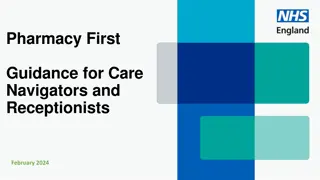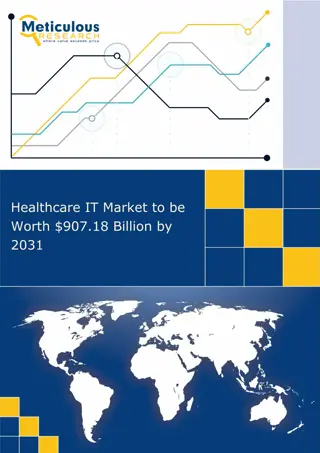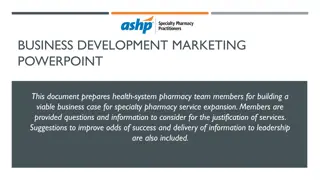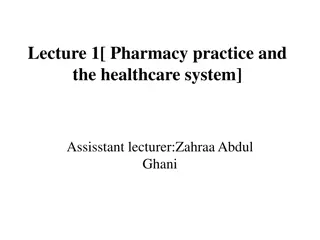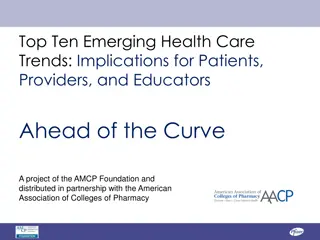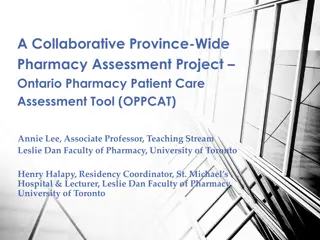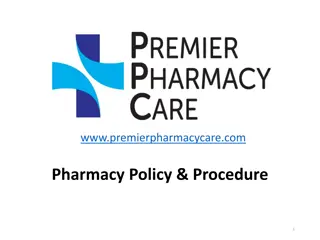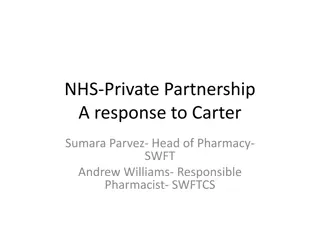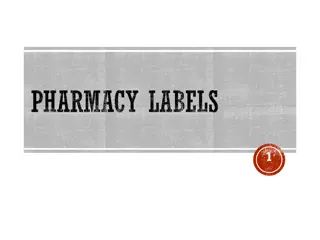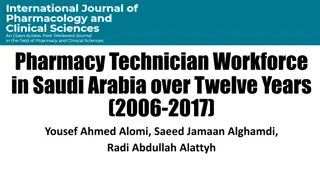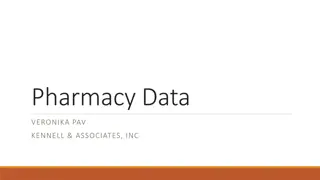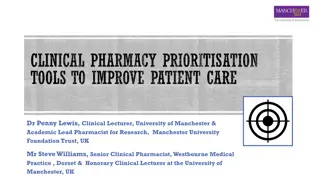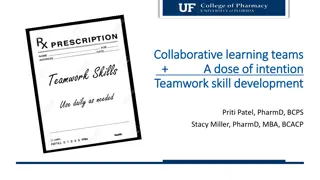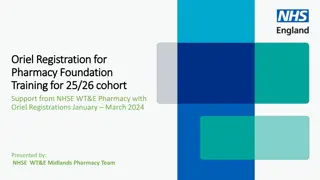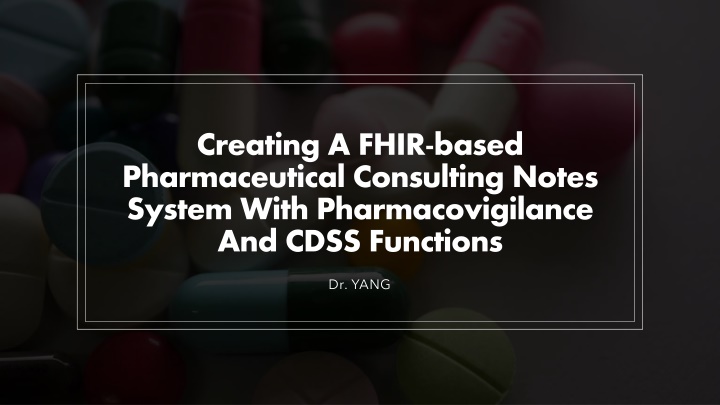
FHIR-based Pharmaceutical Consulting System for Enhanced Medication Safety
"Discover the innovative FHIR-based Pharmaceutical Consulting System designed by Dr. YANG to improve medication safety, reduce errors, optimize therapy selection, monitor drug safety, and enhance clinical decision-making. This system incorporates pharmacovigilance and CDSS functions for a comprehensive approach to pharmaceutical care."
Download Presentation

Please find below an Image/Link to download the presentation.
The content on the website is provided AS IS for your information and personal use only. It may not be sold, licensed, or shared on other websites without obtaining consent from the author. If you encounter any issues during the download, it is possible that the publisher has removed the file from their server.
You are allowed to download the files provided on this website for personal or commercial use, subject to the condition that they are used lawfully. All files are the property of their respective owners.
The content on the website is provided AS IS for your information and personal use only. It may not be sold, licensed, or shared on other websites without obtaining consent from the author.
E N D
Presentation Transcript
Creating A FHIR-based Pharmaceutical Consulting Notes System With Pharmacovigilance And CDSS Functions Dr. YANG
RFP , , , . RFT RFQ ! RFP RFP RFT or RFQ RFT or RFQ
Objectives and Scope 1 2 3 4 5 Improve medication safety Reduce medication errors Optimize therapy selection Monitor drug safety Identify clinical areas and decision types
Multidisciplinary Team Pharmacists Physicians Informaticists Data scientists Software developers FHIR experts
Analyze pharmacy and clinical settings workflows Analyze Workflow and User Requirements Analysis Identify Identify user requirements Determine Determine pain points Identify Identify areas of value
Develop FHIR data model FHIR-based Data Model Utilize relevant FHIR resources Medication, MedicationRequest, AdverseEvent, Observation, Communication
Data Sources and FHIR APIs Identify data sources (EHRs, lab data, prescriptions) Implement FHIR APIs for data integration
CDSS Algorithms and Pharmacovigilance Rules Consider drug interactions, contraindications, patient-specific factors, therapy guidelines, adverse event reporting Develop evidence- based algorithms and rules
User-friendly interface Efficient navigation User Interface Access to consulting notes, pharmacovigilance data, CDSS recommendations Search functions, alerts, customizable templates, communication tools
Efficient notifications for physicians and patients Unified Secure messaging, email, SMS, in-app notifications Communication System Privacy regulations and standards compliance
Unit testing, system testing, user acceptance testing Testing and Validation Assess performance, accuracy, usability, interoperability Refine as needed
Implementation and Training Deploy the system in target clinical settings Provide training and support for end-users
Monitoring and Evaluation Continuously monitor system performance, user feedback, and outcomes Evaluate impact on clinical practice, patient outcomes, communication efficiency Make ongoing improvements as needed
Evaluation metrics for FHIR-based pharmaceutical consulting notes system
User Adoption NUMBER OF ACTIVE END-USERS FREQUENCY OF SYSTEM USE
User Satisfaction User feedback and surveys Interviews to assess satisfaction
Medication Error Reduction CHANGE IN NUMBER OR RATE OF MEDICATION ERRORS COMPARISON OF PRE- AND POST-IMPLEMENTATION
Number and rate of reported ADEs Adverse Drug Event Reporting Timeliness of reporting
Percentage of CDSS recommendations followed Clinical Decision Compliance System influence on clinical decision-making
Therapy Optimization Changes in therapy selection or dosage adjustments Impact on patient outcomes
Time Savings Time saved accessing notes, data, and recommendations Comparison to previous methods
Effectiveness and timeliness of communication Communication Efficiency Physician-to-physician and physician-to-patient communication
Success of data integration and exchange Interoperability Connection with EHRs, lab data, and prescription information
Impact on readmission rates, hospitalization duration, and clinical improvements Patient Outcomes Comparison of pre- and post-implementation
Return on Investment (ROI) Financial impact analysis Cost savings from reduced errors, improved therapy, and time savings
Integrating a business intelligence (BI) solution like power BI into the FHIR-based pharmaceutical consulting notes system with pharmacovigilance and CDSS functions
Data Extraction and Transformation UTILIZE FHIR APIS TO ACCESS DATA TRANSFORM DATA FOR POWER BI COMPATIBILITY
Data Import and Modeling IMPORT TRANSFORMED DATA INTO POWER BI CREATE DATA MODELS AND RELATIONSHIPS
Design Dashboards and Reports CREATE VISUALIZATIONS FOCUSED ON KPIS AND METRICS DEVELOP USER-FRIENDLY DASHBOARDS AND REPORTS
Role-based access control Implement Security Measures Data encryption for privacy and compliance
Share Insights and Collaborate Share dashboards and reports with stakeholders Encourage collaboration and discussion
Schedule Data Refresh Set up scheduled data refreshes for up-to- date information
Monitor Power BI integration performance Monitor and Optimize Gather feedback and optimize dashboards, reports, and data models



